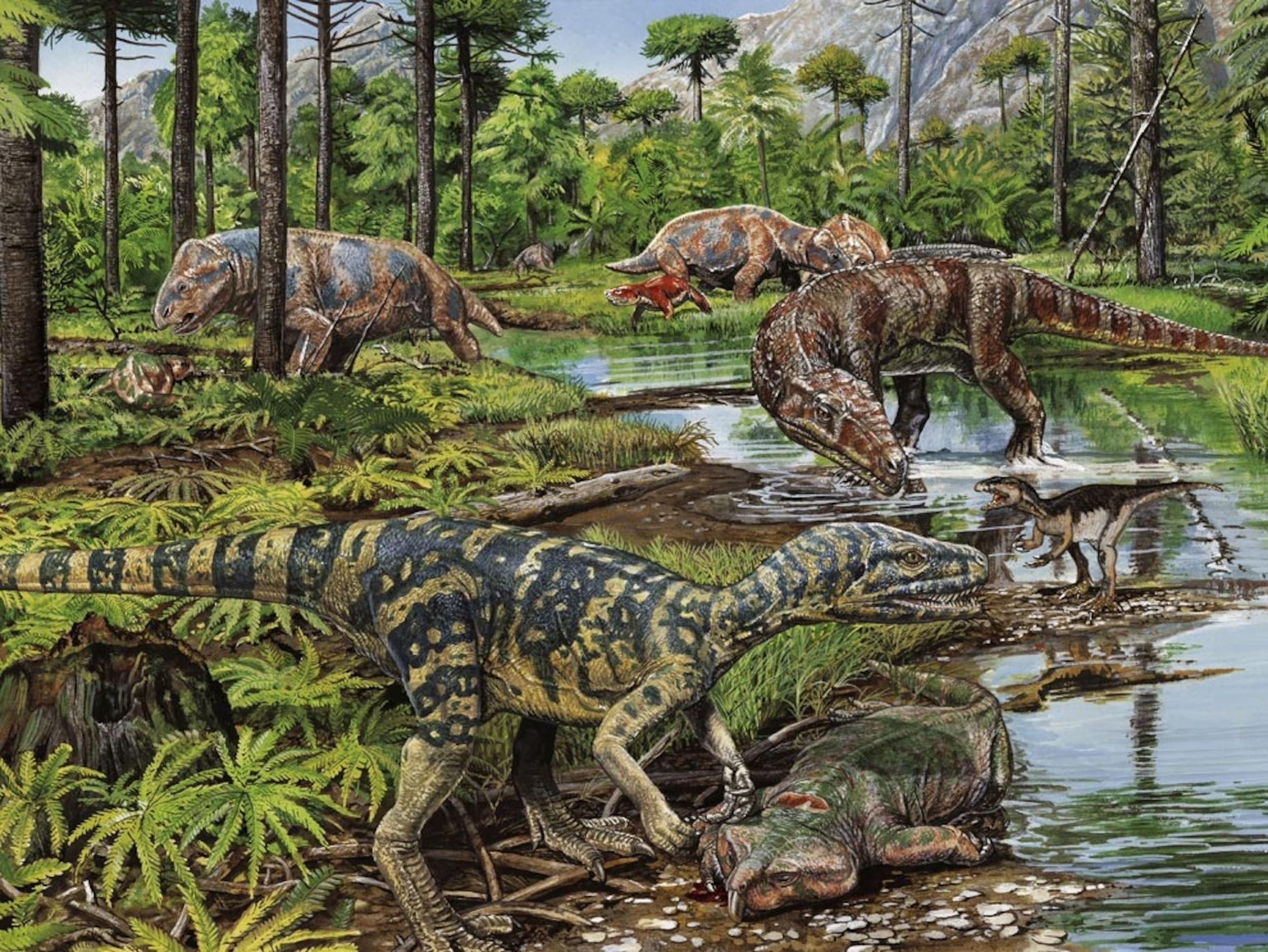
The Triassic Period, spanning roughly 252 to 201 million years ago, left behind a rich fossil record which provides insight into the early recovery of life after the Permian-Triassic mass extinction. Among the common fossils are marine creatures like ammonites and bivalves, as well as various early reptiles and amphibians. Notably, fossils of marine reptiles such as Keichosaurus and phytosaurs, which resembled modern crocodiles but were not closely related, have been found and help explain the diversity of aquatic life at this time. Terrestrial fossils from the Triassic reveal the emergence and diversification of archosaurs, the group that includes dinosaurs, pterosaurs, and crocodilian ancestors. Early dinosaurs such as Coelophysis and Herrerasaurus were small, bipedal carnivores that first appeared in the Late Triassic. Additionally, mammal-like reptiles known as cynodonts and early relatives of modern mammals appeared, representing a crucial evolutionary step preserved in the fossil record. Fossil sites like Monte San Giorgio in Switzerland and Italy have provided exceptionally well-preserved Triassic fossils including fish, marine reptiles, and some terrestrial species. These lagerstätten reveal a detailed snapshot of ancient ecosystems, showing both the marine life that flourished in warm shallow seas and the terrestrial flora and fauna adapting to the new Mesozoic world. Collectively, Triassic fossils document a pivotal period of evolutionary innovation and environmental change that set the stage for the dominance of dinosaurs in the Jurassic period. (Written by AI)
nationalgeographic.com